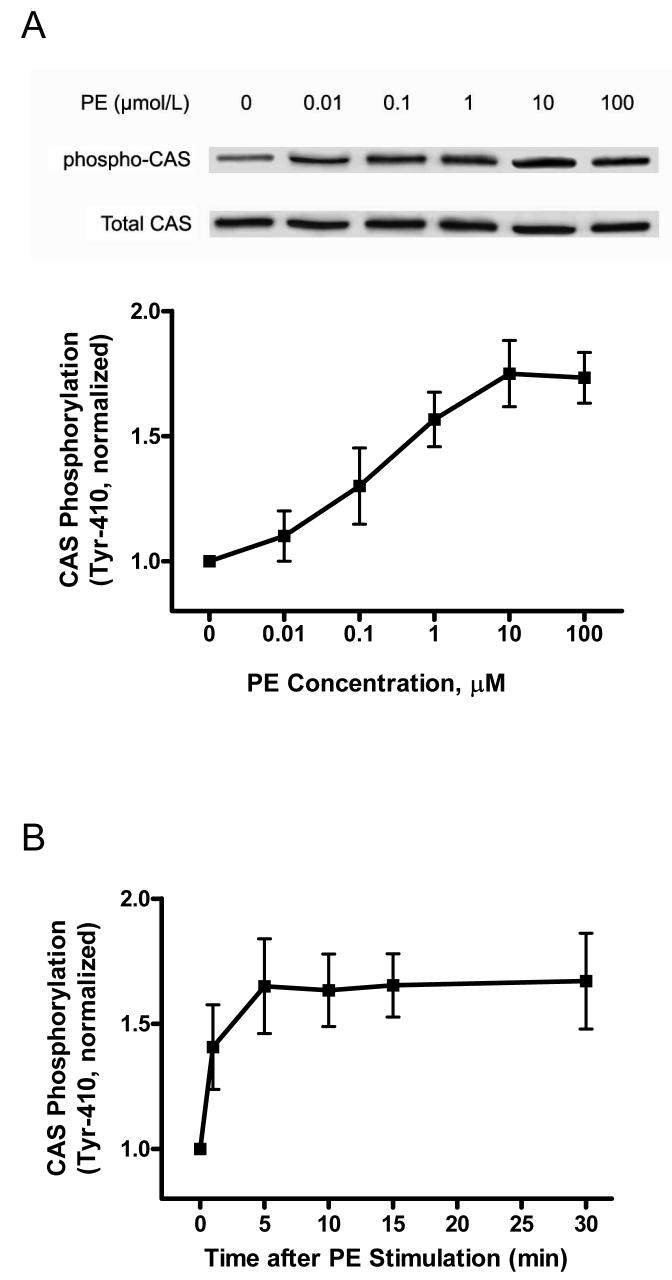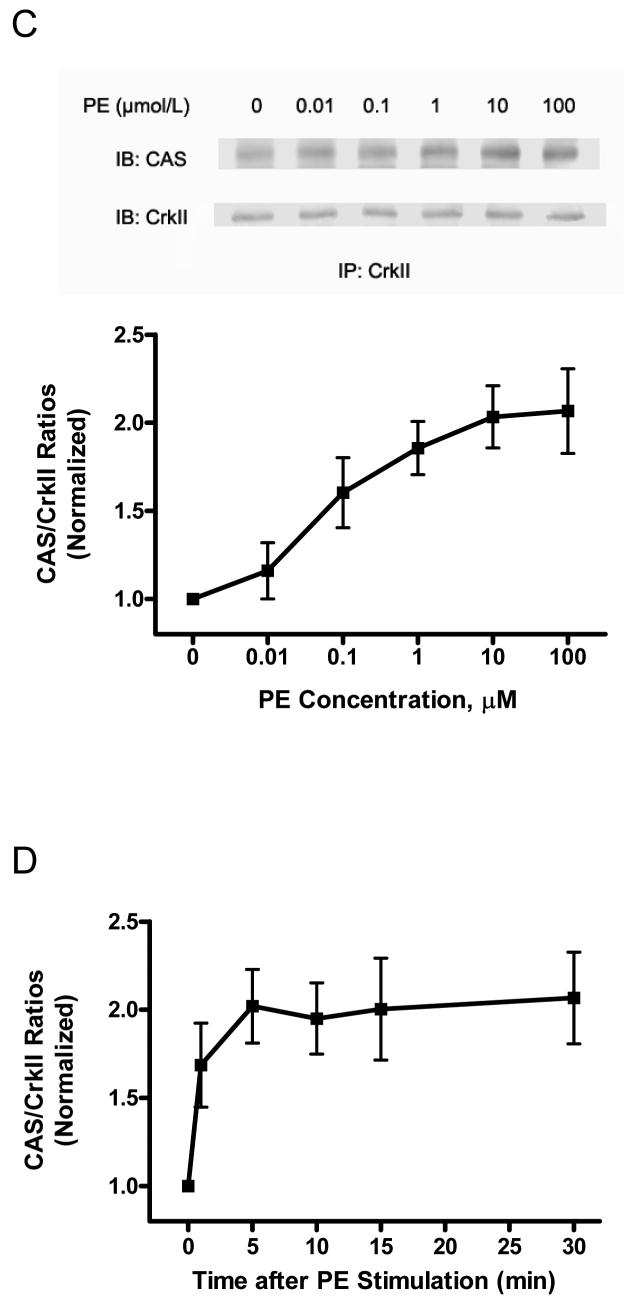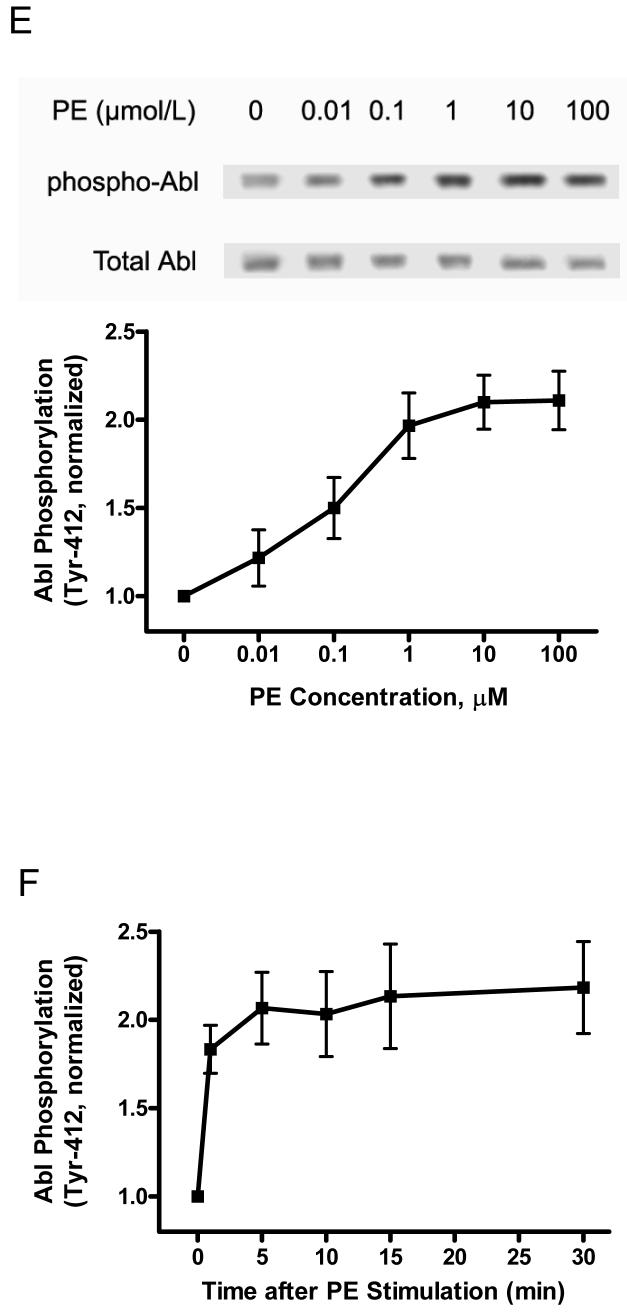Figure 1. Activation with phenylephrine (PE) results in increases in CAS phosphorylation, the association of CAS with CrkII and Abl phosphorylation in resistance arteries.
Unstimulated or PE-stimulated rat mesenteric arteries were frozen for biochemical analysis. (A) Representative blots show the dose-dependent enhancement of CAS phosphorylation (Tyr-410) upon PE stimulation (5 min). The level of CAS phosphorylation elicited by PE is normalized to the value of unstimulated arteries (n = 4-5). (B) CAS phosphorylation upon PE stimulation (10 μmol/L) is time-dependent (n = 4). (C) Representative blots illustrate the increased amount of CAS co-immunoprecipitated with CrkII upon PE stimulation (5 min). CAS/CrkII ratios stimulated by PE are expressed as magnitude of the level of unstimulated arteries (n = 4). (D) The time-dependent increase in CAS/CrkII coupling in response to PE (10 μmol/L) stimulation (n = 4-5). (E) Representative blots illustrate the effects of PE stimulation (5 min) on Abl phosphorylation (Tyr-412). PE-stimulated Abl phosphorylation is normalized to the level of unstimulated tissues (n = 4-6). (F) The time-dependent enhancement of Abl phosphorylation upon PE (10 μmol/L) stimulation (n = 4). Values represent mean ± SE.



